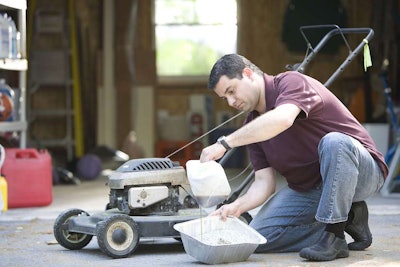
While it may be tempting to simply stow these machines away and not think about them until spring rolls around, the practice of winterizing them will improve their longevity, and your wallet will thank you in the long run.
Below are the elements you should take care of before this equipment hibernates for a while.
Fuel
Leaving fuel in a gas tank can be particularly destructive, as gas can begin to degrade and go bad in as little as 30 days, and gumming can clog the fuel system and the carburetor. If there is only a little bit of fuel left in the tank, you can run the engine to burn off the rest.
The other option is to add fuel stabilizer to a full tank of gas. After filling a tank with the fuel that has been treated with a stabilizer, run the engine for a few minutes so the fuel will cycle through the system and the carburetor. Fill the tank up to the top as a full tank prevents water condensation from getting in and keeps gaskets from drying.
Oil
Drain the oil because, like fuel, it will leave deposits if it goes unused for long periods of time. This cuts down on corrosion and helps with an easier time starting the machine next spring. Fresh oil should be added to the fill line.
Spark plugs
Remove and check each spark plug. If one is corroded, replace it with a new one. These typically last every 100 hours of mowing. Pour half an ounce of oil in the spark plug port and after replacing the spark plug, run the engine to coat the cylinder walls with oil.
Deck
Although mower decks should be cleaned throughout the season, it is especially important to clean the underside of the deck before winter to prevent rust and corrosion caused by the moisture in the grass clippings.
For dried-on clippings, a paint scraper or a bristled scrubber can help with removing the caked-on debris. Lubricate the underside of the deck to keep it clean and prevent rusting.
Also, lubricate all points where friction occurs. When stowing the mower, Consumer Reports suggest placing a container of mothballs near the deck to prevent rodents from nesting in the machine.










